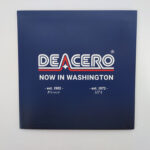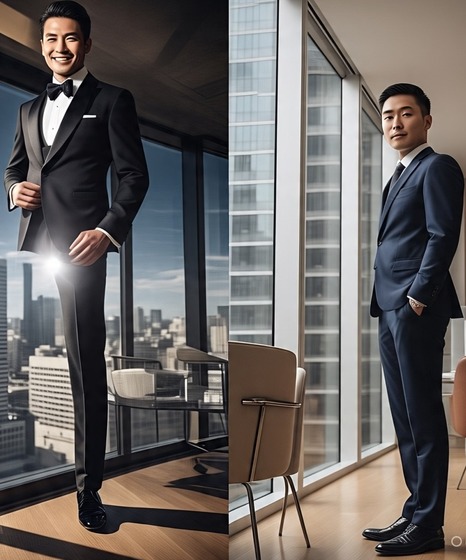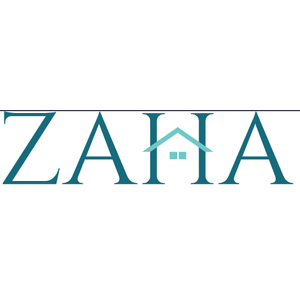Decoding Dress Codes: Dinner Suit vs. Business Suit
In the world of men’s formalwear, the terms “dinner suit” and “business suit” are often heard, but their distinct characteristics and appropriate occasions can sometimes be a source of confusion. While both are elegant ensembles, they serve entirely different purposes, with one designed for refined evening affairs and the other for professional daytime settings. Understanding these key differences is essential for making the right sartorial choice and ensuring you’re always impeccably dressed for the occasion.
The Dinner Suit: An Icon of Evening Elegance
Often referred to as a tuxedo in North America, the dinner suit is the epitome of evening formalwear. It’s reserved for “black tie” events, which signify a high level of formality and sophistication. Think gala dinners, formal weddings (especially evening ceremonies), opera nights, charity balls, and upscale parties.
Key characteristics of a dinner suit include:
-
Fabric and Detailing: The defining feature of a dinner suit is the use of satin. You’ll typically find satin on the lapels (which can be notched, peaked, or, most formally, a continuous shawl collar), on the buttons, and often as a stripe down the outer seam of the trousers. The main body of the jacket is usually made from fine wool (like barathea) or a luxurious blend, often with a slight sheen.
-
Color: Traditionally, dinner suits are black or midnight blue. While some variations exist (like white dinner jackets for warmer climates), these classic colors remain the standard for true black tie.
-
Shirt: A formal white dress shirt is essential. This often features a pleated or pique bib front, a wing collar (for the most formal look) or a semi-spread collar, and requires cufflinks for its French cuffs.
-
Neckwear: A black bow tie is the traditional and almost exclusive choice for a dinner suit. It should ideally be self-tied for maximum elegance.
-
Trousers: The trousers are made from the same material as the jacket, feature no belt loops (worn with suspenders/braces), and crucially, have a satin stripe running down the outside seam.
-
Accessories: A cummerbund is typically worn to cover the waist, creating a seamless transition from shirt to trousers. Formal black patent leather or highly polished dress shoes complete the look.
The dinner suit is about creating a sleek, unbroken line, exuding timeless sophistication.
The Business Suit: Professionalism Personified
In contrast, the business suit, also known as a lounge suit, is your go-to for professional and semi-formal daytime events. This is the attire for the office, business meetings, conferences, job interviews, and many daytime social gatherings that require a polished appearance.
Key characteristics of a business suit include:
-
Fabric and Detailing: Business suits are typically made from wool, wool blends, or other durable fabrics like tweed. The lapels (usually notched or peaked) are made from the same fabric as the rest of the jacket. Buttons are usually made of horn, plastic, or mother-of-pearl, matching or subtly contrasting the suit fabric. Pockets typically have flaps.
-
Color: Common colors for business suits are navy blue, charcoal grey, and black. Lighter shades like light grey or even some subtle patterns (pinstripes, subtle checks) are also common, depending on the formality of the workplace.
-
Shirt: A wide variety of collared dress shirts are suitable, including white, light blue, pink, or subtle patterns. The choice often depends on personal style and the formality of the setting.
-
Neckwear: A necktie is almost always worn with a business suit in professional settings. The color and pattern can vary widely, allowing for personal expression. A bow tie can also be worn, but it’s less common.
-
Trousers: Business suit trousers are made from the same fabric as the jacket and typically have belt loops, allowing them to be worn with a belt.
-
Accessories: A belt is standard, and formal leather shoes (oxfords, derbies, loafers) in black or brown are appropriate. Pocket squares can be added for a touch of flair.
The business suit is designed for versatility and professionalism, allowing for individual expression within a defined professional framework.
When to Wear What: The Crucial Distinction
The fundamental difference lies in the occasion and the level of formality.
-
Dinner Suit (Tuxedo): Exclusively for evening, highly formal “black tie” events. Wearing a dinner suit during the day or to a less formal event would be considered overdressed and out of place.
-
Business Suit: Suitable for daytime professional settings, semi-formal social events, and any occasion where a polished, respectable appearance is required but full evening formality is not.
In essence, if the invitation says “black tie,” reach for your dinner suit. For everything else, from the boardroom to a more casual wedding, a well-tailored business suit is your reliable companion. Knowing the difference ensures you not only look good but also show proper respect for the occasion and its dress code.
- When to Wear What: The Crucial Distinction
- Dinner Suit (Tuxedo): Exclusively for evening, highly formal "black tie" events. Wearing a dinner suit during the day or to a less formal event would be considered overdressed and out of place.
- occasion and the level of formality
Related posts:
 Fitness for Mental Clarity: Unlock Your Focus and Inner Strength with DG FIT MIND
Fitness for Mental Clarity: Unlock Your Focus and Inner Strength with DG FIT MIND
 Top Carrier Oil Suppliers in India for Bulk & Wholesale Buyers
Top Carrier Oil Suppliers in India for Bulk & Wholesale Buyers
 Atlas Pro ONTV : La Révolution de la Télévision par Internet
Atlas Pro ONTV : La Révolution de la Télévision par Internet
 Luxury or Budget? Finding the Right Heathrow Transfer for You
Luxury or Budget? Finding the Right Heathrow Transfer for You
 What Is Cold Rolled Stainless Steel Coil and Why Does It Matter?
What Is Cold Rolled Stainless Steel Coil and Why Does It Matter?
 Make Impact with Commercial Signs Raleigh NC: A Strategic Guide to Business Success
Make Impact with Commercial Signs Raleigh NC: A Strategic Guide to Business Success
 PEX vs Copper in New Homes: What’s Right for You? | Creative Repipe
PEX vs Copper in New Homes: What’s Right for You? | Creative Repipe
 Make Your Message Stick: The Power of Flyers & Posters in Plano!
Make Your Message Stick: The Power of Flyers & Posters in Plano!








